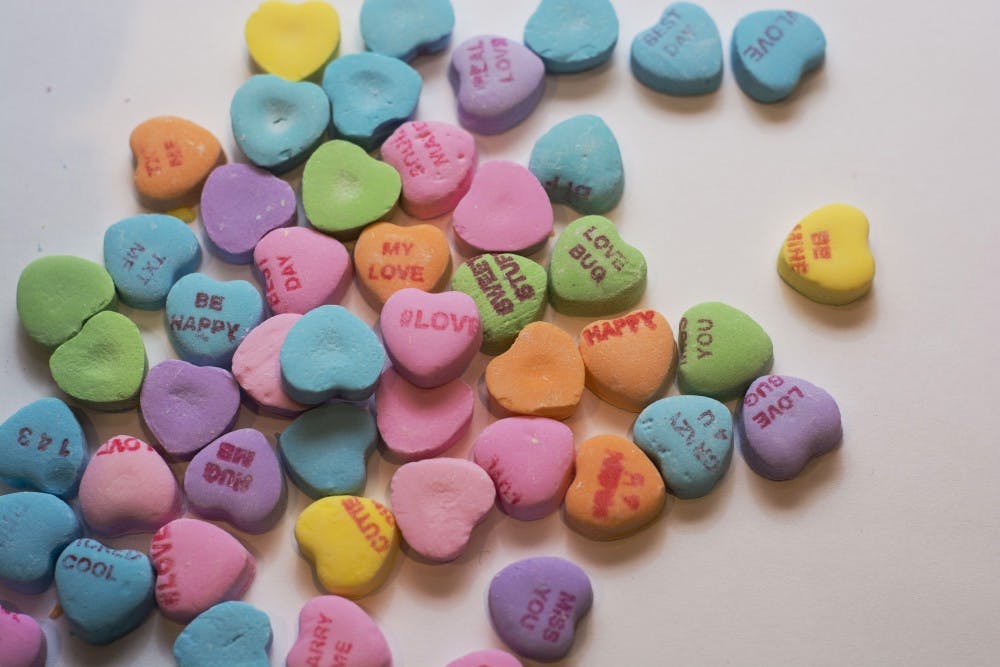There's more to love!
Seven Ball State valentines for your sweetheart
Five Valentine's Day dates on the cheap
Don't forget Galentine's Day on Feb. 13
Many people know how important Valentine’s Day is in modern culture, but they may not know the history behind the holiday dedicated to love.
Jennifer DeSilva, a history professor at Ball State, said there are a few main theories regarding the development of Valentine’s Day.
The first involves St. Valentine, who may have never existed at all. It’s likely the persona of St. Valentine was created when a church outside of Rome, called Valentine’s Church, was named for the person who gave money to help build it.
From there, stories surrounding this man grew. Soon, St. Valentine was the human embodiment of perfect morals, with an emphasis on love.
St. Valentine’s name was first recorded on a list of feast days for different saints. These feast days were intended to acknowledge the martyrdom of their respective saints, and St. Valentine’s took place on Feb. 14.
Another idea behind Valentine’s Day is an ancient Roman festival called the Lupercalia, which occurred around Feb. 14. During the festival, men would take strips of skin from a sacrificed goat and whip women with them to make the women more fertile.
The region in which Valentine’s Day originated plays a significant role as well. In Britain and the northern Mediterranean, spring arrives earlier than it does in the United States — usually in February — which could have spurred feelings of happiness and love.
At Ball State, however, the history of Valentine’s Day is not nearly as important as the modern interpretation of love, whether that be platonic, romantic or self-love.
Taylor Phillips, a sophomore nursing major, said people tend to focus too much on Valentine’s Day and not enough on the rest of the year.
“I think it’s really important to incorporate love into your everyday life,” Phillips said. “I don’t think it should be any different on Valentine’s Day.”
Phillips said love is a top priority in many people’s lives, and finding true love is an important focus in society.
Lillian Marsh, a freshman undecided student, expressed similar views about the significance of the holiday.
“People love love and they want to celebrate it,” Marsh said.
However, Marsh also said “it would be cool to have a day where I could celebrate my relationship with my friends.”
Valentine’s Day not only lets people express their love, but their consumerism as well. According to the National Retail Federation, Americans are estimated to spend $19.7 billion on the sentimental holiday in 2016 alone, setting a record high.
Sophomore nursing major Eli Taubert said money and love have a connection, especially on Valentine’s Day.
“It’s kind of turned into showing your love by spending money, which I don’t think that’s the way you should show love,” Taubert said. “It’s a way to show someone that you care.”
Riley Holkan, a senior pre-med major, said he doesn’t think Valentine’s Day should be celebrated to the extent that it is. He said people celebrate it so extensively because love is a universal feeling that everyone experiences.
“It’s more of an excuse for people to go out and show somebody they love somebody else,” Holkan said.





